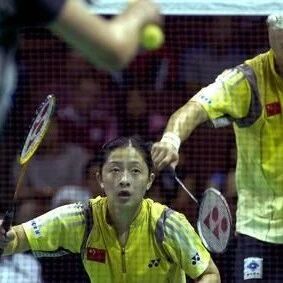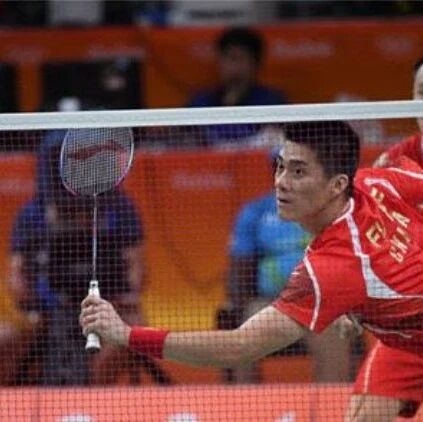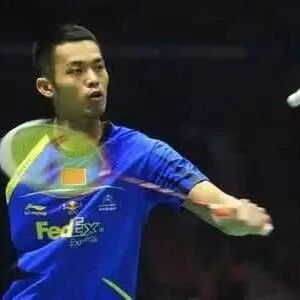
In badminton doubles, rotation has always seemed simple, but in practice, it often falls short, severely affecting the coordination between partners. In amateur matches, two strong singles players who usually excel individually sometimes struggle to win when paired together—precisely because their chemistry and teamwork aren’t as seamless as those of a more evenly matched duo. So, how should doubles players rotate positions effectively, and what kind of training is needed? Rotation refers to the mutual exchange of positions between the two players on the court. The primary goal of rotation is to smooth out your team’s attacking play, enhancing the threat of your offense while simultaneously strengthening your defensive setup.1. Defensive-to-Offensive Transition RotationWhen the opponent's attack isn't sharp enough, or when your team responds with a high-quality defensive shot, opportunities for a transition between offense and defense arise on the court.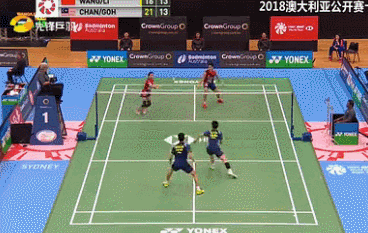
At this moment, the player who seizes the opportunity should move up to the net with the ball and prepare to close it off, while their partner quickly steps in to fill the gap left behind by their net-bound teammate—thus completing a seamless transition from defense to offense.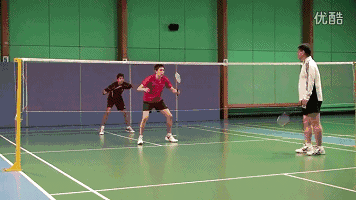
In this process, the two players need to be highly synchronized—when one rushes forward toward the net, the other must remain perfectly in place and keep up seamlessly. If the second player lags behind or fails to match their partner’s movement, gaps will emerge on the court, causing the pair’s rotations to become disjointed.2. Transition from Offense to Defense RotationIn doubles, attacks often run into the opponent's tight defensive setup. When the offense stalls or lacks effectiveness, both players need to immediately shift into defensive positions.
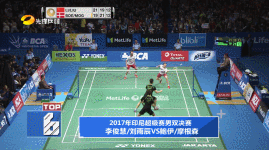
The most fundamental principle of this rotation is—defend the nearest player. The person closest to the ball steps into the defensive position first, while teammates quickly fill in the open defensive gaps.
If one player sprints diagonally toward the net to lob the ball, they should immediately retreat straight back afterward, taking responsibility for defending half of the court. Absolutely avoid retreating diagonally, as this path is longer, making it harder and slower to reach your position quickly—and it also increases the risk of being caught out by the opponent’s chasing shot. Meanwhile, the other teammate must swiftly step in to fill the gap based on how their partner moves.3. The "Forward-Backward" RotationDoubles rotations often involve forward and backward shifts completed during offensive positioning. During these rotations, players can move either clockwise or counterclockwise.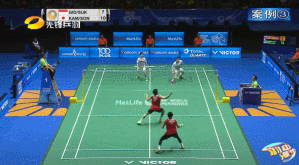
Doubles rotation isn’t about whether we want it—it’s about whether we can do it. Rotation changes can only be executed when the right conditions for rotation arise; otherwise, the very purpose of rotation is lost.Front and rear wheel rotation generally occurs in two scenarios:1) When the backcourt offense gets too exhausting, rotate players between the front and back courts to create a continuous offensive flow.2) The backcourt attack is weak, especially when the women's doubles player is pinned back there—make sure to rotate players between the front and back courts.In summary: Focus on on-court communication and make proactive, decisive movements. In addition to effectively and efficiently distributing the ball, doubles players should also pay close attention to communicating and coordinating with their teammates during matches—sometimes, a simple shout at a key moment can effortlessly trigger smooth rotations and seamless teamwork.Mastering the rotation in badminton doubles, combined with these six essential doubles techniques, makes winning amateur matches a breeze.
First: Serving and receiving servesRather than frantically scrambling on the court to eke out a single point, it’s far better to carefully study the key techniques for receiving and serving!In doubles, try to minimize unforced errors on your serve—after all, that hard-earned point your partner and you just won could easily be handed back to the opponents if you miss your serve. It’s simply not worth it!
Doubles play at the net is crucial—it’s both a high-scoring area and an extremely high-risk zone. That’s why the player at the net must focus on solid defensive positioning and aggressively close in to block shots!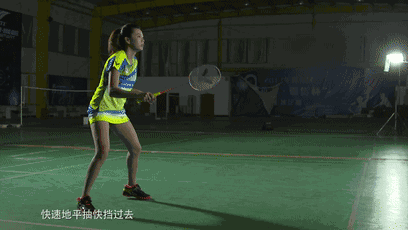
Third: Play more drop shots.If you're not confident hitting high clears and smashes, stick to flat drives around the court instead—try your best to avoid lifting high balls to your opponent. Even if it means passing up your own scoring chances, don’t give your opponent the opportunity to capitalize!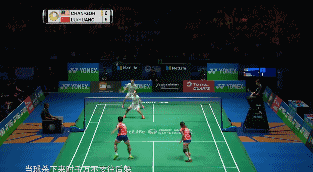
Fourth: Hit more shots from the backcourtTry to hit the shuttlecock as much as possible toward the opponent's backcourt—whether it’s a drop shot, a clear, or a flat drive. As long as you keep the shots in bounds, aim for the backcourt more often. After all, if you’re always forced to return balls from the backcourt, you’d feel pretty awkward too. The same logic applies to your opponent!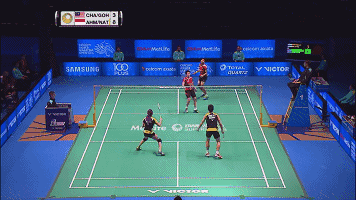
Fifth: Keep defensive principles firmly in mind.The opponent hits a high ball—time for you and your partner to position yourselves front and back for defense!Lob the ball high to your opponent—your partner should position themselves left and right to defend!This is the unchanging defensive formation for doubles—make sure to memorize it!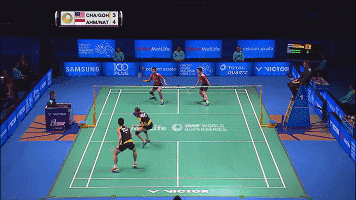
Sixth: Aim more often for the open space to hit the ball.While swinging the bat, be sure to keep your peripheral vision focused on your opponent’s position—identify their weak spots, and aim your hits squarely into those open areas!In badminton doubles, if you can fully understand, master, and seamlessly integrate these six key points into your doubles play, I’m confident you’ll be able to outplay 90% of your opponents on the court!After all, we amateurs don’t compete in the World Championships or the Olympics—so keep these six key points in mind, and you’ll become a hit on the court in doubles play! Everyone will want to partner up with you!More article recommendations:
Step-by-step guide to mastering the forehand flat high shot
Stretching and cooling down after badminton is actually more important than warming up.
Learn to smash from scratch—say goodbye to the frustration of jumping but still missing the shuttlecock!
